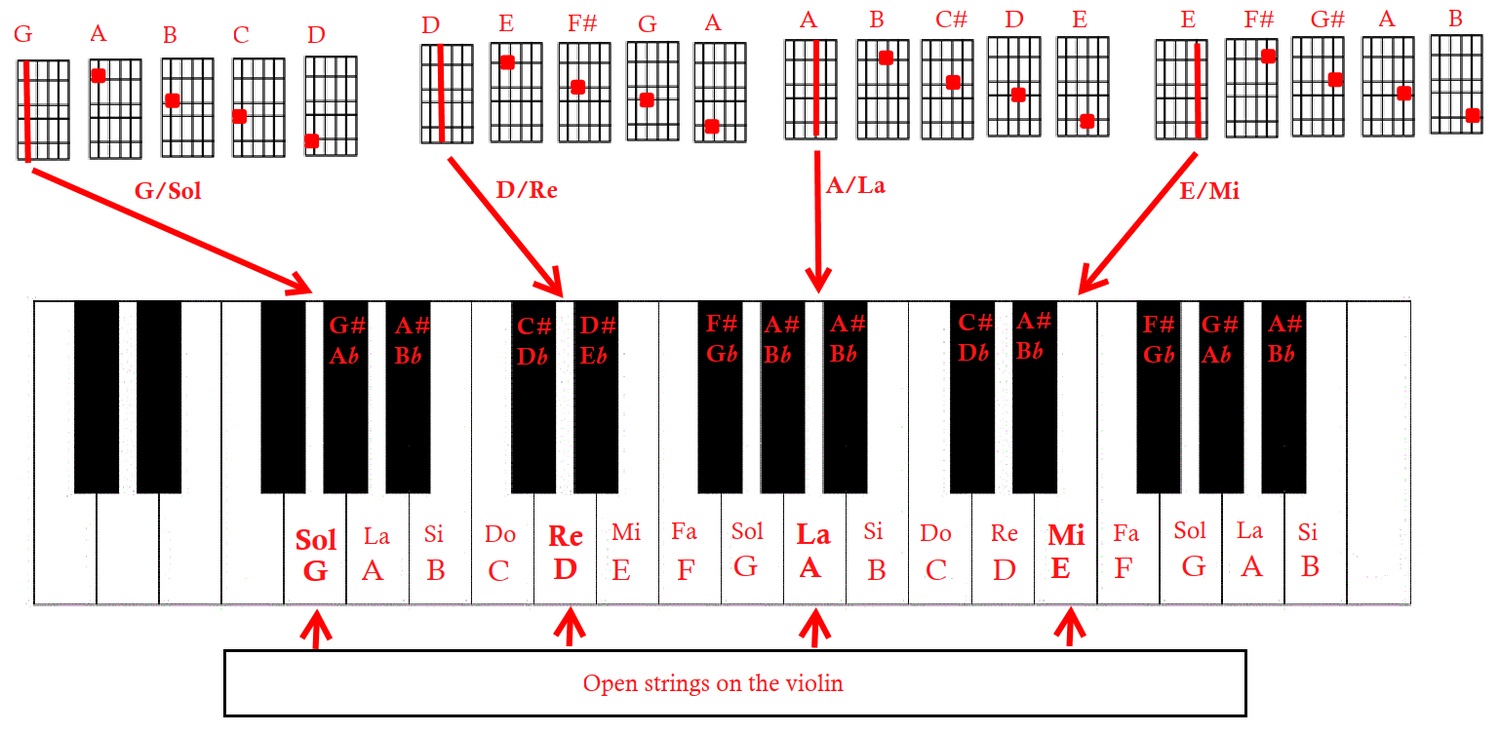In order to indicate the intended musical context of a composition with a universally recognisable vocabulary, composers all around the world (and from the ages past!) enjoy the use of certain expressions in one of the 3 main European languages: Italian, German, and French. Let’s start here with the most used terms in Italian, which makes up probably about 90% of all musical composer-musician dialogue! Enjoy discovering, and try them out at the tip of your tongue, too! It’s fun!
Accelerando - Accelerating
Adagio - Slow / at an easy pace
Affettuoso - Affectionately
Agitato - Agitatedly
Al / Alla - In the style of
Allargando - Broadening (Literally, large-ning)
Allegro / Allegretto - Happy (fast) / Moderately happy (moderately fast)
Andante / Andantino - At a walking pace / Somewhat at a walking pace (this can mean either slightly faster or slightly slower. The final decision of an exact speed needs to be decided by the context.)
Animato - Animatedly
Appassionato - Passionately
Arco - Change to playing with bow (after pizzicato/plucked section)
Arioso - Like an aria (very fluid, as if singing a love song)
Assai - Very
Attacca - ‘Attack’: Go the next section, without stopping (instead of leaving a pause before beginning). Composers sometimes use this to keep the transition between movements as seamless as possible.
Ben (+adjective) - Very (+adjective)
Brio - Vigour / vibrancy. Usually: Con (with) brio.
Cantabile / Cantando - Singing
Capriccioso - Funny, mischievous
Con / Col / Colla (+ verb/noun) - With the (+ verb/noun).
For example: Col legno (with the wood of the bow), con calma (calmly).
Comodo / Comodamente - Comfortably
Con (+ adjectvive / noun) - With (+ Adjective/noun). For example: con brio.
Crescendo - Gaining in volume (dynamics). Also written as cresc. in short form.
Da capo - From the top (literally, ‘from the head’). This appears after a section of repetition and the composer wants us to start again from the material at the top of the page.
Dal Segno- From the Sign (this can take many forms, but is usually represented by a highly stylised S-Shape).
Deciso - Decisively
Decrescendo / Diminuendo - Opposite of Crescendo. Waning in volume (dynamics). Literally, ‘diminishing’.
Delicato - Delicately
Dolce - Sweetly
Doloroso - Painfully
Energico - Energetically
Espressivo - Expressively
Facile - Easily
Fine - The end
Forte / Fortissimo - Strong dynamics (loud) / Very strong (very loud).
Forza - Force. For example, con forza (forcefully).
Fretta - Rushing
Fuoco - Fire. For example, con fuoco (With fire).
Furioso - Furiously
Giocoso - Playfully
Gioioso - Joyfully/ joyously
Grandioso - Grandly
Grave - Gravely. Darkly.
Grazioso - Gracefully
Impetuoso - Impetuously. Impatiently.
Lacrimoso - Tearfuly. Mournfully.
Largo / Larghetto - Broadly/ Somewhat broadly.
Legato- Smoothly. No audible break between notes.
Leggero / Leggiero - Lightly
Lento - Slowly
Liberamente - Freely
Maestoso - Majestically
Marcato - Marked (articulation on every note).
Meno (+Adjective/dynamic) - Less. For example, Meno mosso (less movement), meno forte (less loud).
Mezzoforte (MF) / Mezzopiano (MP) - Moderately loud (less than forte) / Moderately soft (more than piano)
Misterioso - Mysteriously
Moderato - Moderately paced
Molto - Very. Quite.
Morendo - Waning. Dying.
Mosso - Active, moving. Pushing. For example: più mosso (more active), meno mosso (less active).
Moto - Movement. (Con moto means with movement)
Nobile - Noble/nobly.
Non - Not. For example, allegro ma non troppo (quick but not too much).
Ostinato - Obstinately. To be played with very regular tempo and rhythm.
Parlando - As if talking (about an event, or to someone).
Pausa - Pause
Perdendosi - Losing oneself
Pesante - Heavily
Piangendo - Crying
Piano / Pianissimo - Gently, softly (also written as p) / Very gently, very softly (pp)
Piu’ - More
Pizzicato (Pizz.) - Played by plucking the string (instead of bowing)
Poco / Pochissimo - Little / Very Little.
Precipitando - Falling, stumbling, running into a higher pace. The effect is acceleration and loss of control.
Presto - At a quick pace
Prima / Primo - The first. For example, tempo primo (first indicated tempo).
Quasi - Almost. For example, quasi niente (almost nothing).
Rallentando - Slowing down
Rigoroso - Rigorously. Energetically.
Rinforzando - Reinforcing (gaining) in energy and speed
Risoluto - Resolute (very steady speed)
Ritardando - Slowing down
Ritenuto - Holding back
Ritmico - Rhythmically
Rubato - Taking time. Literally, ‘stealing’ time.
Scherzo / Scherzando - A joke / jokingly
Seconda / Secondo - The second. For example violino secondo (second violin/s).
Semplice - Simply
Sempre - Always
Senza - Without. For example, senza vibrato (without vibrato).
Segue - As before. Literally, ‘to follow’.
Sforzando - Usually written as sfz. Accented / strongly reinforced articulation.
Simile - Similar. (Like segue, but less commonly used.)
Slancio - Onward precipitation by force of inertia. Like accelerando, but less common.
Smorzando - Dampening/ refraining in general energy (speed, sound).
Sonoro - Resonant, with rich tone.
Sopra - Above
Sospirando - Sighingly (to imitate a singer’s voice - from a death scene, for example).
Sostenuto - Sustained sound and articulation
Spirito - Spirit, life, energy. Usually, con spirito.
Spiritoso - Mischievously
Staccato - Clearly detached notes. Opposite of legato.
Stringendo - Clearly detached notes. Opposite of legato.
Subito - Suddenly. For example, subito forte (sub. f), subito piano (sub. p).
Tacet - (Latin) Silence. For example, when a soloist is playing and the orchestra stays silent.
Tempo - Speed
Tenero - Tenderly
Tenuto - Same as Ritenuto - held. May be an instruction for either articulation or speed, or both.
Tranquillo - Tranquil. Calm.
Triste - Sad
Troppo - Too much. Usually seen in the combination: , ma non troppo (_, but not too much).
Tutti - Everyone (this follows a solo section where the accompaniment / orchestra stays silent - Tacet).
Veloce - Quick
Vigoroso - Vigorous
Vivace / Vivo - Vivacious / Lively. (Also, very fast.)
Voce - Voice








